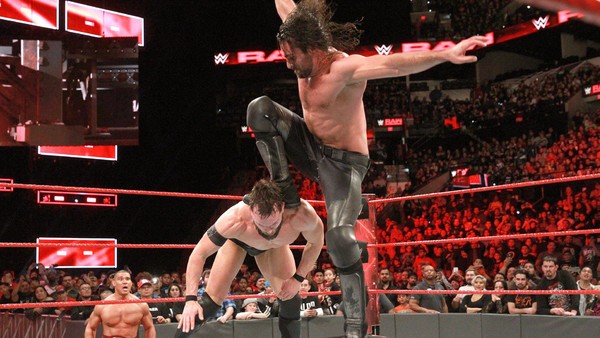Why The Curb Stomp Can Save Seth Rollins

Perhaps that’s because, to frame the Rollins problem in the sparest way possible, something was missing. Steve Austin, in a 2017 edition of his podcast, used his brilliant economy with the language to put it best: Seth Rollins wasn’t “all the way over”. He wasn’t wrong; as a babyface, Rollins lacked dynamism, fire, and likability. He was merely a very good wrestler in the era of the very good wrestler. Practically indistinguishable, it’s little wonder that he faded from the conversation - and what’s ironic is that he possessed a better babyface repertoire as a heel in his annus mirabilis of 2015. His career trajectory had reversed course.
Was the Curb Stomp that missing element? Is it that simple? Perhaps it is; when WWE banned the move in 2015, it removed an aspect of his identity. The man who threatened to burn down the Authority was a victim of censure by the real authority - a decision that undermined his character, as well as the decisive, literal stamp of his in-ring quality.
The return of the Curb Stomp also proves that finishers still matter, as much as Rollins still does. The fans in San Antonio popped big for the move itself, but also revered it as a legitimate finisher. There was no chance Bálor was getting up from it. He didn’t. Equipped with a move so obscene as to be legendary, Rollins has reclaimed the X-factor.
It really was a superb moment, symbolising both renewed creative freedom and a sorely-needed return to the Rollins of old. Beyond that, it proved that wrestling, the blood and guts of it, still matters. Rollins has reemerged into relevance with a wrestling move. No frills, no bluster, no empty promises: a wrestling move framed as deadly in effect.
Rollins’ catchphrase, upon his return, ran “Redesign. Rebuild. Reclaim”.
He needed no such lofty ambition. It’s fitting that a man who borrowed too heavily from the Triple H playbook over the past two years required no forced evolution.
“Restore” represents Rollins’ best chance of sitting atop the throne.